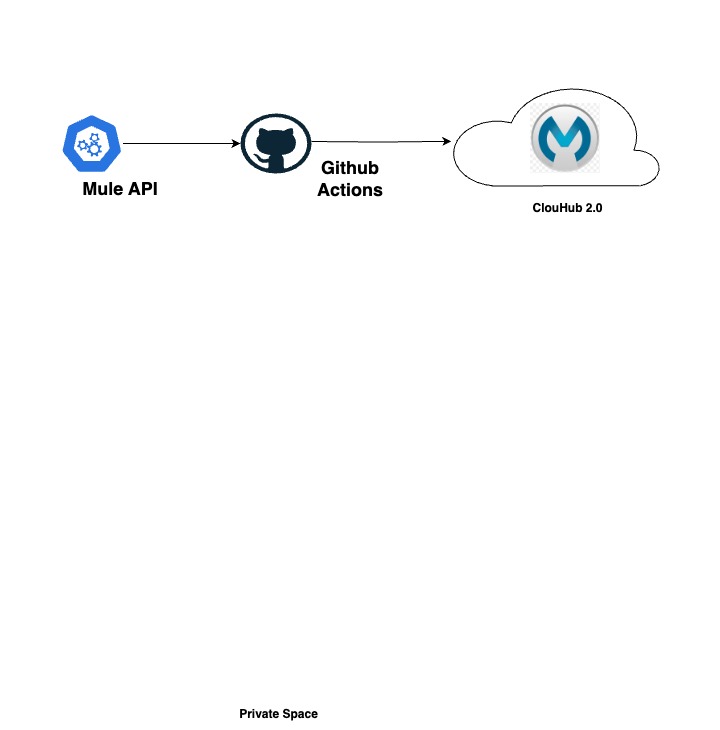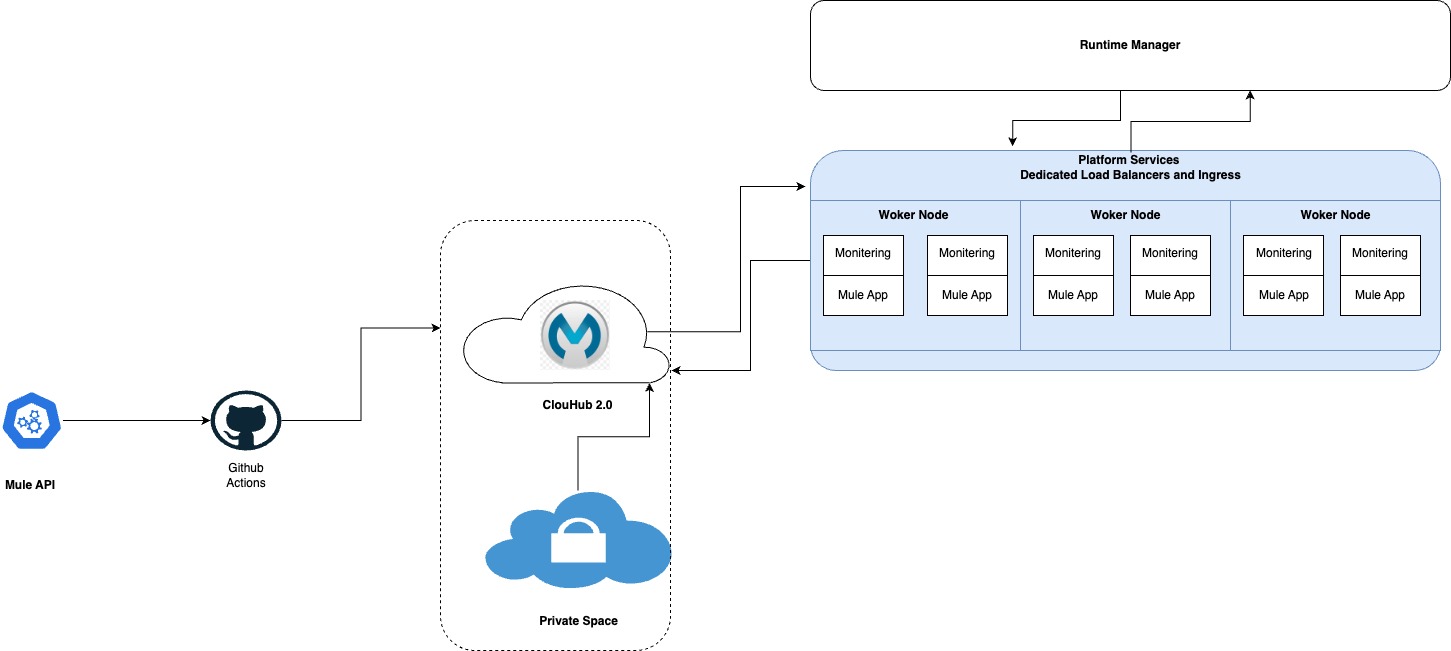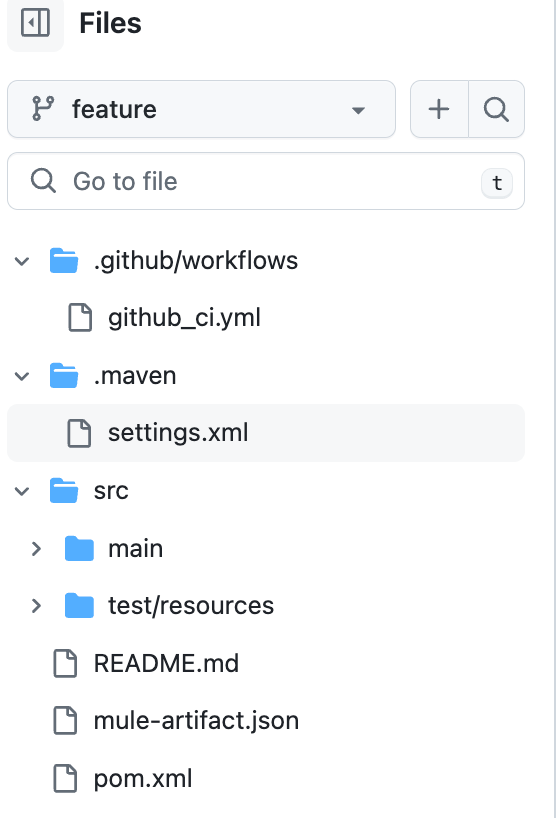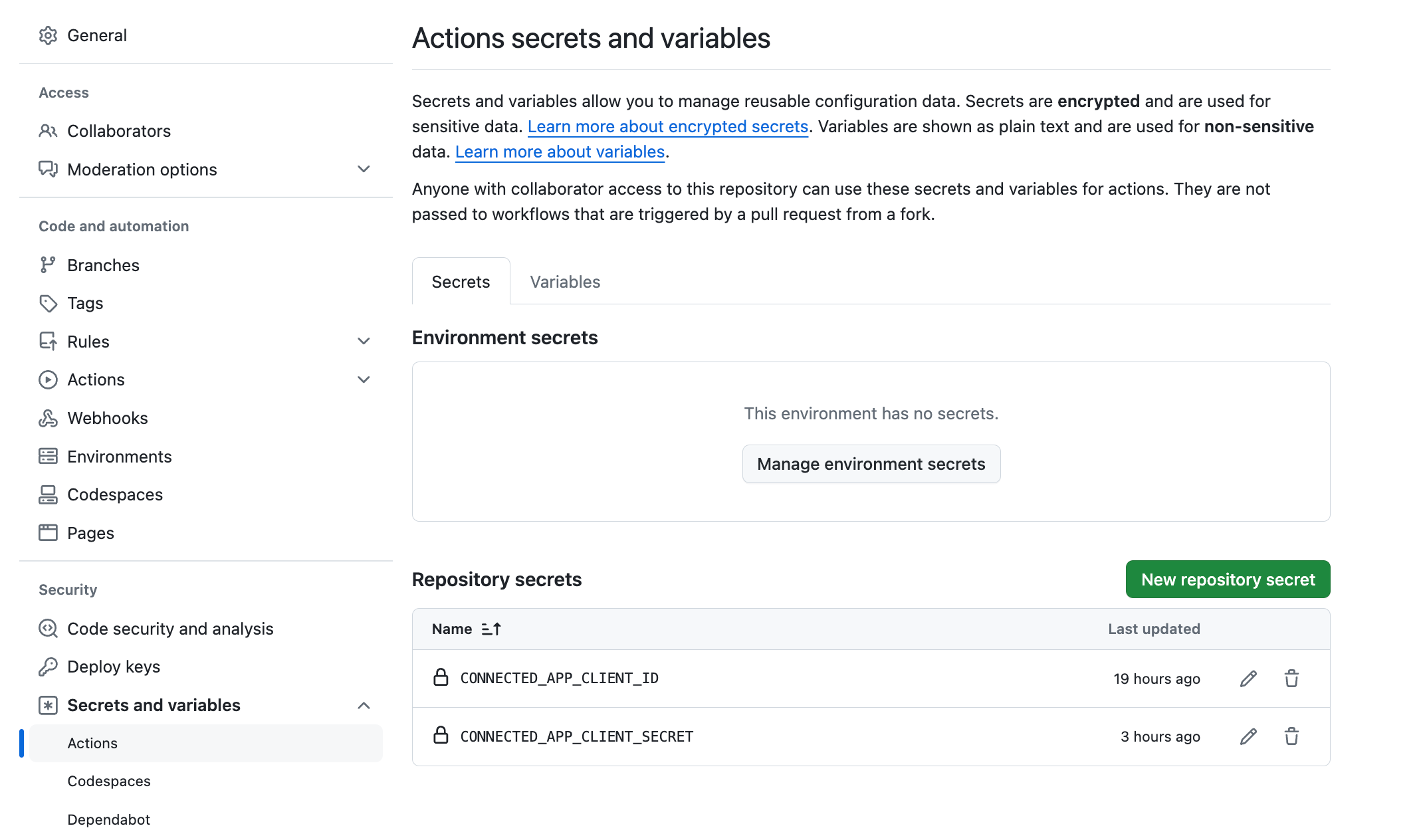Continuous Integration of Applications to CloudHub 2.0 using Github Actions
 NagaRaju Kukkadapu
NagaRaju Kukkadapu

Prerequisites:
Github
Anypoint Platform (Exchange Contributor, Runtime Access)
Mule API Project Structure:

Before you Deploy Mule Application to Cloudhub 2.0
Update Pom xml file with Distribution Management
<distributionManagement>
<repository>
<id>exchange-connected-app-v3</id>
<name>Exchange Private Repository</name>
<url>https://maven.anypoint.mulesoft.com/api/v3/organizations/${project.groupId}/maven</url>
<layout>default</layout>
</repository>
</distributionManagement>
Update Pom Xml with repositories
<repositories>
<repository>
<id>exchange-connected-app-v3</id>
<name>Anypoint Exchange</name>
<url>https://maven.anypoint.mulesoft.com/api/v3/maven</url>
<layout>default</layout>
</repository>
<repository>
<id>mulesoft-releases</id>
<name>MuleSoft Releases Repository</name>
<url>https://repository.mulesoft.org/releases/</url>
<layout>default</layout>
</repository>
<repository>
<id>anypoint-exchange-v3</id>
<name>Anypoint Exchange V3</name>
<url>https://maven.anypoint.mulesoft.com/api/v3/maven</url>
<layout>default</layout>
</repository>
</repositories>
For groupId please refer How to know my Organization ID (Org ID) on the Anypoint Platform
For the deployment of Mule application to Cloudhub 2.0 , application has to be published to exchange and then the deployment.
To publish the application to Anypoint Exchange create folder .maven and make file settings.xml.
<?xml version="1.0"?>
<settings>
<pluginGroups>
<pluginGroup>org.mule.tools</pluginGroup>
</pluginGroups>
<servers>
<server>
<username>~~~Client~~~</username>
<password>${CONNECTED_APP_CLIENT_ID}~?~${CONNECTED_APP_CLIENT_SECRET}</password>
<id>exchange-connected-app-v3</id>
</server>
</servers>
<profiles>
<profile>
<properties>
<org.id>${ORGANIZATION_ID}</org.id>
</properties>
<repositories>
<repository>
<id>exchange-connected-app-v3</id>
<name>Corporate Repository</name>
<url>https://maven.anypoint.mulesoft.com/api/v3/organizations/${org.id}/maven</url>
</repository>
<repository>
<id>exchange-connected-app-v2</id>
<name>Corporate Repository</name>
<url>https://maven.anypoint.mulesoft.com/api/v2/organizations/${org.id}/maven</url>
</repository>
</repositories>
<id>exchange-repos</id>
</profile>
</profiles>
<activeProfiles>
<activeProfile>exchange-repos</activeProfile>
</activeProfiles>
</settings>
This repository will serve as an example. The code for your Mule application should be stored here.
When your code is uploaded to GitHub, create a new folder named .github. Inside this folder, create another folder named workflows. This is where the YAML file containing the pipeline's actual code should be created.
In the YAML script below, the Git reference points to the develop branch, and the pipeline starts running only in the develop branch. Similarly, you can create jobs for multiple environments for each branch.
# This is a basic workflow to help you get started with Actions
name: CI
# Controls when the workflow will run
on:
# Triggers the workflow on push or pull request events for all branches
push:
branches: ["develop","main"]
pull_request:
branches: ["develop","main"]
jobs:
build:
if: ${{ contains(github.ref, 'dev') ||contains(github.ref, 'release') }}
runs-on: ubuntu-latest
steps:
- run: echo 'MULE CONNECTED APP USER--${{vars.MULE_CONNECT_APP_USER}}'
- run: echo 'MULE CONNECTED APP PASSWORD--${{vars.MULE_CONNECT_APP_PWD}}'
- run: echo 'Eventname-- ${{ github.event_name }}'
- run: echo 'event-- ${{ github.event }}'
- run: echo 'Ref-- ${{ github.ref }}'
- run: echo 'RefName-- ${{ github.refname }}'
- run: echo 'github head ref-- ${{ github.head_ref }}'
- name: Checkout this repo
uses: actions/checkout@v3
- name: Cache dependencies
uses: actions/cache@v3
with:
path: ~/.m2/repository
key: ${{ runner.os }}-maven-${{ hashFiles('**/pom.xml') }}
restore-keys: |
${{ runner.os }}-maven-
- name: Set up JDK 1.8
uses: actions/setup-java@v3
with:
distribution: 'zulu'
java-version: 8
- name: Build with Maven
env:
USERNAME: ${{ secrets.CONNECTED_APP_CLIENT_ID }}
PASSWORD: ${{ secrets.CONNECTED_APP_CLIENT_SECRET }}
KEY: ${{ secrets.decryption_key }}
#run: mvn --settings .maven/settings.xml clean install -e -X --file pom.xml
run: mvn -B package --file pom.xml --settings .maven/settings.xml -DskipMunitTests
- name: Stamp artifact file name with commit hash
run: |
artifactName1=$(ls target/*.jar | head -1)
commitHash=$(git rev-parse --short "$GITHUB_SHA")
artifactName2=$(ls target/*.jar | head -1 | sed "s/.jar/-$commitHash.jar/g")
mv $artifactName1 $artifactName2
- name: Upload artifact
uses: actions/upload-artifact@v3
with:
name: artifacts
path: target/*.jar
deploy_to_dev:
environment:
name: Dev
if: ${{ contains(github.ref, 'dev') }}
needs: build
runs-on: ubuntu-latest
steps:
- run: echo 'PROVIDER***--${{vars.DEPLOY_PROVIDER}}'
- run: echo 'REPLICA COUNT***--${{vars.REPLICA_COUNT}}'
- name: Checkout this repo
uses: actions/checkout@v3
- name: Cache dependencies
uses: actions/cache@v3
with:
path: ~/.m2/repository
key: ${{ runner.os }}-maven-${{ hashFiles('**/pom.xml') }}
restore-keys: |
${{ runner.os }}-maven-
- uses: actions/download-artifact@v3
with:
name: artifacts
- name: Deploy to dev
env:
CONNECTED_APP_CLIENT_ID: ${{ secrets.CONNECTED_APP_CLIENT_ID }}
CONNECTED_APP_CLIENT_SECRET: ${{ secrets.CONNECTED_APP_CLIENT_SECRET }}
KEY: ${{ secrets.decryption_key }}
run: |
mvn deploy --settings .maven/settings.xml -DskipMunitTests -Dappname_env='dev' -Denvironment=Sandbox -DMULE_ENV=dev -DDEPLOY_TARGET=Cloudhub-US-East-2 -DMULE_PROVIDER=MC -DDEPLOY_MULE_VERSION=4.6.2 -DDEPLOY_VCORE=1 -DDEPLOY_FORWARD_SSL_SESSION=true -DDEPLOY_LAST_MILE_SECURITY=true -DCONNECTED_APP_CLIENT_ID="$CONNECTED_APP_CLIENT_ID" -DCONNECTED_APP_CLIENT_SECRET="$CONNECTED_APP_CLIENT_SECRET"
Update Connected App Secrets:
For connected app credentials refer Connected App functionality
update connected app secrets in repository settings as below

If you are following any branching strategy, raise a pull request to the develop branch. As per the above script, the Git reference is pointed to the develop branch, so the pipeline will get triggered accordingly.

Subscribe to my newsletter
Read articles from NagaRaju Kukkadapu directly inside your inbox. Subscribe to the newsletter, and don't miss out.
Written by

NagaRaju Kukkadapu
NagaRaju Kukkadapu
I'm an Integration developer with extensive knowledge on designing, developing & architecture integration solutions using MuleSoft,Workato,Celigo,Talend,Spring,Java